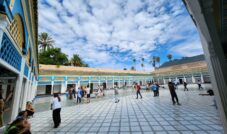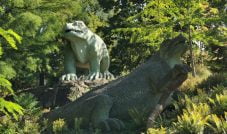El Badi Palace may not be as photogenic as other landmarks in Morocco such as Le Jardin Majorelle YSL Garden or Bahia Palace, but I think it’s still worth visiting if you have time (it’s also much less busy than the other two and provided a quiet respite from the bustling Moroccan streets).
You really do feel like you’ve stepped back in time due to how ruined the walls are. Make sure you visit the museum to really get a sense of how grand this palace once was.
My Photos of El Badi Palace
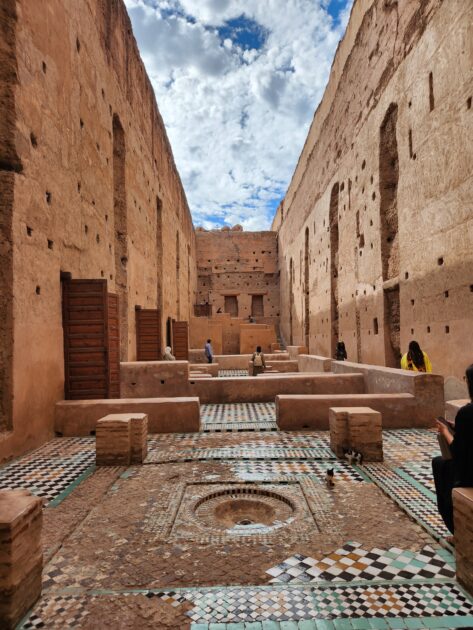
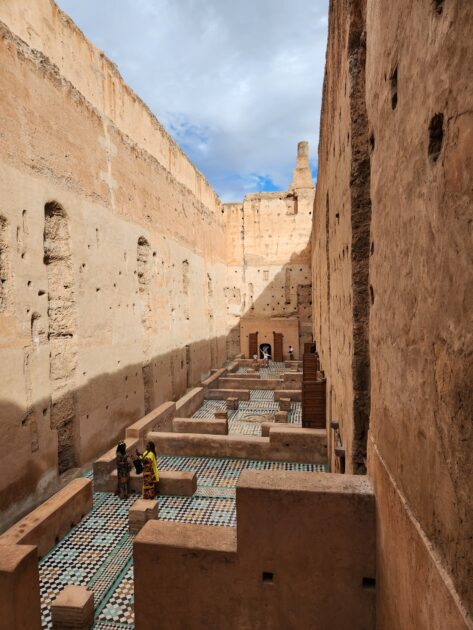
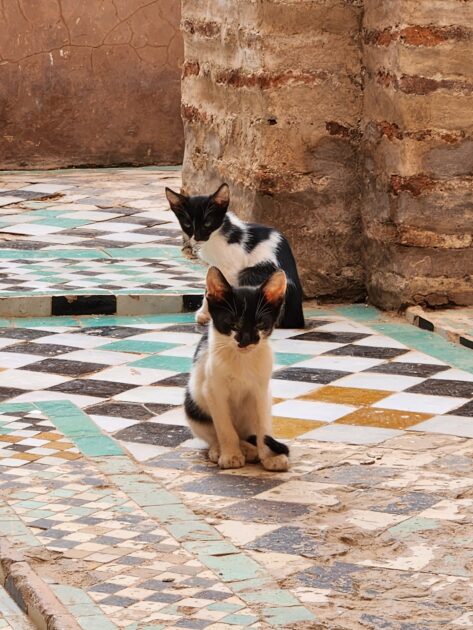
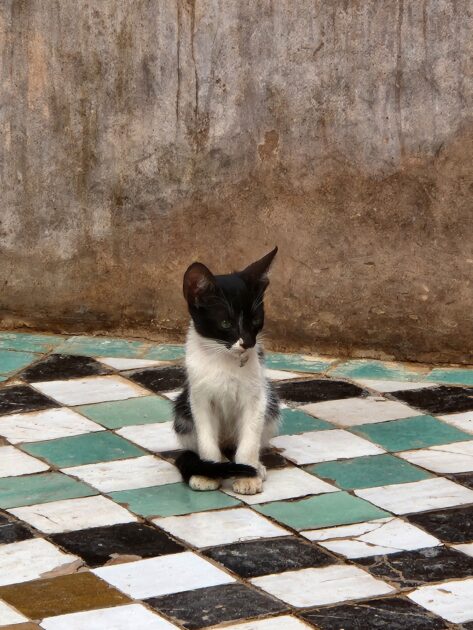
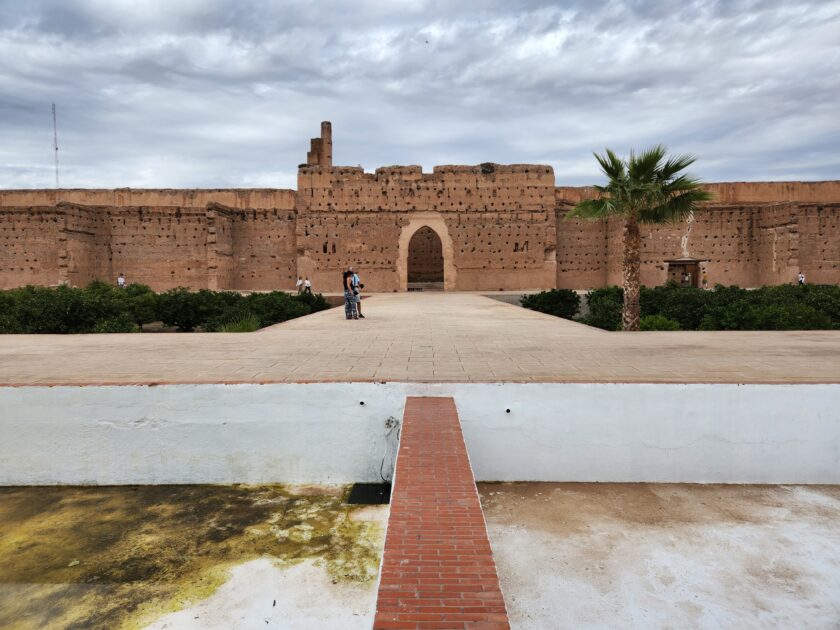
History of El Badi Palace
El Badi Palace (Palais el-Badi, meaning “The Incomparable”) is a ruined 16th-century royal complex in Marrakech, Morocco, commissioned by Sultan Ahmad al-Mansur of the Saadian dynasty in 1578. It was built to celebrate his victory over the Portuguese at the Battle of the Three Kings, and funded by war reparations and profits from Morocco’s sugar and trans-Saharan gold trade.
Construction lasted over 15 years, with materials imported from Italy (Carrara marble), India (onyx), and Sudan (gold leaf). The palace featured 360 rooms, lavish gardens, and vast courtyards with reflecting pools — designed to rival the Alhambra and Topkapi Palace. It served as a ceremonial venue for foreign dignitaries and royal receptions.
After al-Mansur’s death in 1603, the palace fell into neglect. In the late 17th century, Sultan Moulay Ismail of the Alaouite dynasty ordered its dismantling, repurposing its treasures for his new capital in Meknes.
10 Interesting Facts About El Badi Palace
- The palace was built using Italian marble, Sudanese gold, and Indian onyx.
- It once had 360 rooms, including the Crystal, Bamboo, and Gold Halls.
- The central courtyard measures 135 x 110 metres, with a 90-metre pool.
- The palace hosted the Minbar of the Koutoubia Mosque, now displayed on site.
- Storks nest atop the ruined walls, adding a natural charm to the site.
- The palace was dismantled by Moulay Ismail to build his own palace in Meknes.
- The name El Badi is one of the 99 Names of God in Islam, meaning “The Incomparable”.
- The site includes underground dungeons and tunnels, once used for prisoners.
- El Badi Palace was damaged in the 2023 earthquake, but reopened after repairs.
- It hosts the Marrakech Folklore Festival and contemporary art exhibitions.
Things to See and Do at El Badi Palace
- Explore the Grand Courtyard
Wander through the vast open space with sunken gardens, orange trees, and reflecting pools. - Visit the Minbar Pavilion
Admire the intricately carved 12th-century pulpit from the Koutoubia Mosque — a masterpiece of Andalusian craftsmanship. - Climb the Ramparts
Enjoy panoramic views of Marrakech’s skyline and the Atlas Mountains from the terrace. - Discover the Underground Chambers
Explore the cool, shadowy dungeons and tunnels that once held prisoners and palace stores. - Spot the Storks
Look up to see white storks nesting on the ruined towers — a beloved symbol of the site. - Watch the Reconstruction Video
View a short film that digitally recreates the palace’s original splendor. - Attend Cultural Events
Catch concerts, exhibitions, and performances during festivals like Marrakech du Rire. - Photograph the Ruins
Capture dramatic shots of terracotta walls, mosaic floors, and architectural remnants. - Visit the Museum Rooms
Learn about the Saadian dynasty, palace construction, and Moroccan history through curated displays. - Combine with Nearby Sites
Pair your visit with the Bahia Palace, Saadian Tombs, or Jemaa el-Fnaa for a full heritage experience.
Practical Information for Visiting El Badi Palace
- Location: Ksibat Nhass, Marrakech 40008, Morocco
- Opening Times: Daily, 9:00 am – 5:00 pm
- Entry Fees:
- Adults: ~70 MAD (~€7)
- Moroccan residents: ~10 MAD
- Children under 12: ~30 MAD
- Tickets: Available at the gate or online; cash preferred
- Recommended Visit Duration: 45–75 minutes
(Allow extra time if exploring museum rooms or attending events) - Accessibility:
- Courtyard and museum accessible
- Ramparts and underground areas via stairs only
- Transport:
- Walkable from Jemaa el-Fnaa
- Taxi or bus to Place des Ferblantiers
- Parking: Limited nearby; best to walk or use public transport
- Food & Drink: Cafés and restaurants in the Mellah and nearby medina
- Toilets: Available on site
- Nearby: Bahia Palace, Saadian Tombs, Mellah Market, Koutoubia Mosque
- Official Website: El Badi Palace – Badipalace.com

